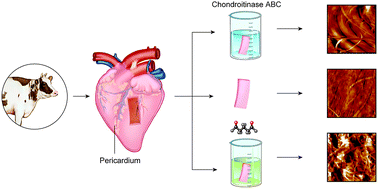Collagen cross linking and fibril alignment in pericardium
Abstract
The influence of natural cross linking by glycosaminoglycan (GAG) on the structure of collagen in animal tissue is not well understood. Neither is the effect of synthetic cross linking on collagen structure well understood in glutaraldehyde treated collagenous tissue for medical implants and commercial leather. Bovine pericardium was treated with chondroitinase ABC to remove natural cross links or treated with glutaraldehyde to form synthetic cross links. The collagen fibril alignment was measured using synchrotron based small angle X-ray scattering (SAXS) and supported by atomic force microscopy (AFM) and histology. The alignment of the collagen fibrils is affected by the treatment. Untreated pericardium has an orientation index (OI) of 0.19 (0.06); the chondroitinase ABC treated material is similar with an OI of 0.21 (0.08); and the glutaraldehyde treated material is less aligned with an OI of 0.12 (0.05). This difference in alignment is also qualitatively observed in atomic force microscopy images. Crimp is not noticeably affected by treatment. It is proposed that glutaraldehyde cross linking functions to bind the collagen fibrils in a network of mixed orientation tending towards isotropic, whereas natural GAG cross links do not constrain the structure to quite such an extent.


 Please wait while we load your content...
Please wait while we load your content...